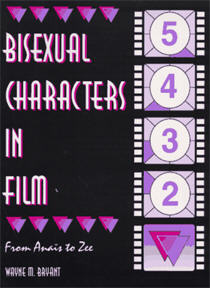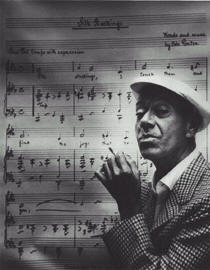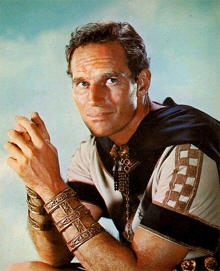 |


|
|
From Anais to Zee Bisexual Characters in Film: From Anais to Zee, by Wayne Bryant, Harrington Park Press, 1997, 186 pages,
From the first openly bisexual characters in the 1914 film "A Florida Enchantment," to the present-day rise in more realistic representations of bisexual characters in independent movies, Bryant does an excellent job of synthesizing a great deal of information into an easy-to-read and enjoyable format. Beginning with the silent movie era and working through to present-day Hollywood, the various manifestations that bisexual representations in film have taken over the years are explored. Rather than doing a straight (no pun intended) historical take on the subject matter, though, Bryant breaks down and deconstructs the forms that bisexual representation have taken in film -- e.g., the killer, the victim, the hustler, the slut, etc. In the process, he is able to show not just the evolution of these specific representations from "classic" films through to present day movies but also the myriad ways that bisexual directors, screenwriters, actors, and actresses have used in order to work in and around these representations and, when possible, subvert them.
It is in this introductory chapter, though, that the two main weakness in the book first become apparent. One, when chronicling the history of bisexual representation in silent film, Bryant's analysis of the films has a tendency to remain fairly superficial -- his discussion more often than not translates into mere plot synopses of the films themselves. Two, he has a tendency to belabor the same point at length on occasion. (There are only so many movies one can read that highlight a specific cinematic representation before thinking, "Okay, I get the idea!"). This pattern permeates the book, and although it results in interesting, albeit light, reading, one often wishes that his examination of the movies went deeper, were more concise, and ultimately included a richer discussion of the significance these movies had within a larger social and/or historical context. The following two chapters present the most substantial section of the book, and thus are also the most fascinating. In "Breaking the Code" and "Lost in the Translation," Bryant chronicles the struggles bisexual directors, writers, actors and actresses have faced in their attempts to have their lives portrayed in a realistic and positive light in films. In "Breaking the Code," Bryant covers the close to 60 year struggle that Hollywood has waged to define what images of sexuality and gender roles are and are not acceptable to be viewed by the public. From the 1930s Hays Code, which forbade any movies to "acknowledge that any of the characters [in a film] were in fact homosexual or bisexual, or even acknowledge that such people existed" (26), to the recent trend of giving films that deal with homosexuality and bisexuality in an adult, mature manner an NC-17 rating, it is apparent that Hollywood has, almost since its very beginning, attempted to endorse / enforce specific norms for sexuality and gender roles. The irony is, of course, that the creation of the Hays Code, Hollywood's attempt tat self-regulation in order to prevent government intervention, was a direct result of the various scandals (heterosexual, homosexual, bisexual and otherwise) that plagued early Hollywood. Furthermore, despite the myriad ways that Hollywood has tried to dictate the terms by which sexuality can be discussed and represented, there have always been those individuals willing to challenge it. For example, Cecil B. Demille was able to (for a short while, at least) work around the religiously influenced Hays Code by making films with religious themes, which always seemed to have "godless heathens" engaged either in an orgy scene or capturing and tying up naked Christian women! (25) Bryant also shows how the challenges to the Code were many times a direct result of the social and historical context in which the movies were being made. For instance, he argues that because of World War II, "people who always had thought of themselves as heterosexual increasingly depended upon those of their own sex for emotional support" (31). In other words, a much larger segment of the American population had encountered homosexuality, which changed their outlook on both homosexuality and bisexuality. Subsequently, the American public became more willing, or at least more open, to explore these topics. Although this did not necessarily translate into a new Hollywood ethos of more positive portrayals of homosexual and bisexual characters, it did nevertheless set the stage for the works of foreign, underground, and independent directors that did deal with these topics to enter American mainstream theaters. Subsequently, the post-World War II world was ready for a renewed exploration of sexuality and gender roles, as evidenced by the great number of movies that began to be released around the world at this time addressing these issues. In "Lost in the Translation," Bryant explores the far more insidious attempt by Hollywood to shape and regulate sexuality and its representations by "sanitizing" bisexual characters when translating source material to the big screen. In other words, realizing that homosexuality and bisexuality could never be completely removed from the entertainment industry, since many of the sought after talent was, in fact, either homosexual or bisexual, the powers-that-were decided to cut their losses short by still employing these individuals --and reaping the rewards -- while refusing to acknowledge their presence in Hollywood. In essence, then, this was an early version of the controversial "don't ask, don't tell" policy so disastrously employed by the military in the 1990s. How could homosexuals and bisexuals have been an integral part of the Hollywood movie machine, but not really be represented by it? Studios either changed relationships between characters, deleted references to any bisexual characters in a movie, and/or downplayed or removed a character's bisexuality (or sexuality altogether). This latter practice was particularly chilling (and sad) in the case of film biographies, especially when the person was still alive. For example, Cole Porter, who was bisexual, willingly consented to having his character "straightened out" in the pseudo-biographical film "Night and Day" (1946).
The result was that Hollywood films left bisexuals without realistic role-models and presented only caricatures. Bisexuals were represented as crazys, victims, promiscuous, closeted husbands, abused and/or neglected wives, or as a source of amusement for others, i.e. straight individuals, either through "camp" representations or as the butt of jokes. It is in these intervening 7 chapters that Bryant's analysis of bisexuality in film degenerates into mostly plot synopses of a great deal of movies. Although it is quite fun and interesting to read about these movies, especially the background information, what is missing is a more substantial discussion on what these films illustrate about bisexuality in films and how they fit into the larger social and historical context of their times. However, using this approach does allow Bryant the opportunity to rip the lid off of some Hollywood's best kept secrets (e.g. the posthumously revealed affair between Errol Flynn and Tyrone Power), as well as provide juicy background information on classic Hollywood films.
The last two chapters, entitled "In Their Own Image" and "By the Bi," also suffer from Bryant's tendency to present a series of facts without much analysis. In essence, the former chapter is basically a who's who of bisexual directors, writers, actors and actresses throughout Hollywood history. While it is useful to have these names listed in one place, there is not much insight about bisexuals in film or the film industry. The depth of his analysis could be summarized as follows: More bisexual people in the entertainment industry are willing to come out as bisexual, which in turn is not only making it easier for others to come out but also allowing bisexuals to be represented more positively and realistically. There is nothing too earth shattering about this revelation, especially for people who already go to see movies often. What is missing is an exploration of what exactly this whole process of being more open means to these individuals in the entertainment industry, as well as what effect this is having on movie-goers in general and bisexuals in particular. Are these movies mainstream releases, or are they geared more specifically to only a gay, lesbian and bisexual crowd? Do these projects attract only already "out" gay, lesbian and bisexual professionals in the industry, or do "straight" professionals figure prominently in these productions? And finally, representing the bottom line for many in Hollywood: How are these movies doing at the box-office? "By the Bi" appears ready to answer these questions, especially since it begins with a discussion of attempts by the bisexual community to organize and become politically active. Furthermore, the first section of this chapter is entitled "The Bisexual Influence Offscreen," so it would appear safe to assume that Bryant will now once again take a step back and analyze bisexual representation in the broader social, political and historical context he used at the beginning of the book. Unfortunately, this is the wrong assumption, since Bryant's "analysis" once again degenerates into a series of descriptions of various bisexual directors, writers, musicians, and others in the entertainment industry who have influenced movies for the last 70 years despite their orientation. Once again, a deeper, more critical look at how these individuals fit into their broader social and historical context would have resulted in a more substantial read. Furthermore, exploring what effect these movies and representations had outside of cinema (e.g. did these representations come to change prevailing attitudes towards bisexuals, or even the views of bisexuals regarding themselves) would have provided a fascinating opportunity to examine the role that cinema plays in shaping and even subverting notions of sexuality and gender in society. Overall, despite these shortcomings, the book nevertheless manages to be entertaining and informative. It is obviously geared more for individuals interested in cinema than it is for those more concerned with issues pertaining to representations of gender and sexuality in the movies. Whether you are interested in the historical development of bisexual cinema from around the world or simply want to read about some really interesting Hollywood gossip, this book is for you. However, we still need a rigorous analysis of bisexuality, and gender, in general, in movies. Reviewer Abel M. Tomatis is a graduate student in the counseling psychology doctoral program at the University of Southern California. His specialty is gender studies, with an emphasis on interventions with men geared towards reducing relationship violence. He is currently a Graduate Advisor in the Office for Student Conduct at USC, and for the last 4 years was an Emancipation Preparation program supervisor at St. Anne's Maternity Home, a residential treatment facility for pregnant and parenting teens. Courtesy of International Gay & Lesbian Institute, One Institute Press: www.usc.edu/isd/archives/oneigla/onepress/ |
 © 1997-2000 BEI
© 1997-2000 BEI
 Bisexual Characters in Film: From Anais to Zee is a fascinating and often humorous look at the history of bisexual representation in the movies. Covering a span of 80 years and examining over 200 films from 25 countries, the book manages to comprehensively explore not just the history of bisexuals in film, but also places their varying representations (or lack thereof) in their specific social and historical contexts.
Bisexual Characters in Film: From Anais to Zee is a fascinating and often humorous look at the history of bisexual representation in the movies. Covering a span of 80 years and examining over 200 films from 25 countries, the book manages to comprehensively explore not just the history of bisexuals in film, but also places their varying representations (or lack thereof) in their specific social and historical contexts.  Cole Porter
Cole Porter  Though Chuck didn't know -- and wouldn't have liked it -- his character in Ben Hur swung both ways
Though Chuck didn't know -- and wouldn't have liked it -- his character in Ben Hur swung both ways